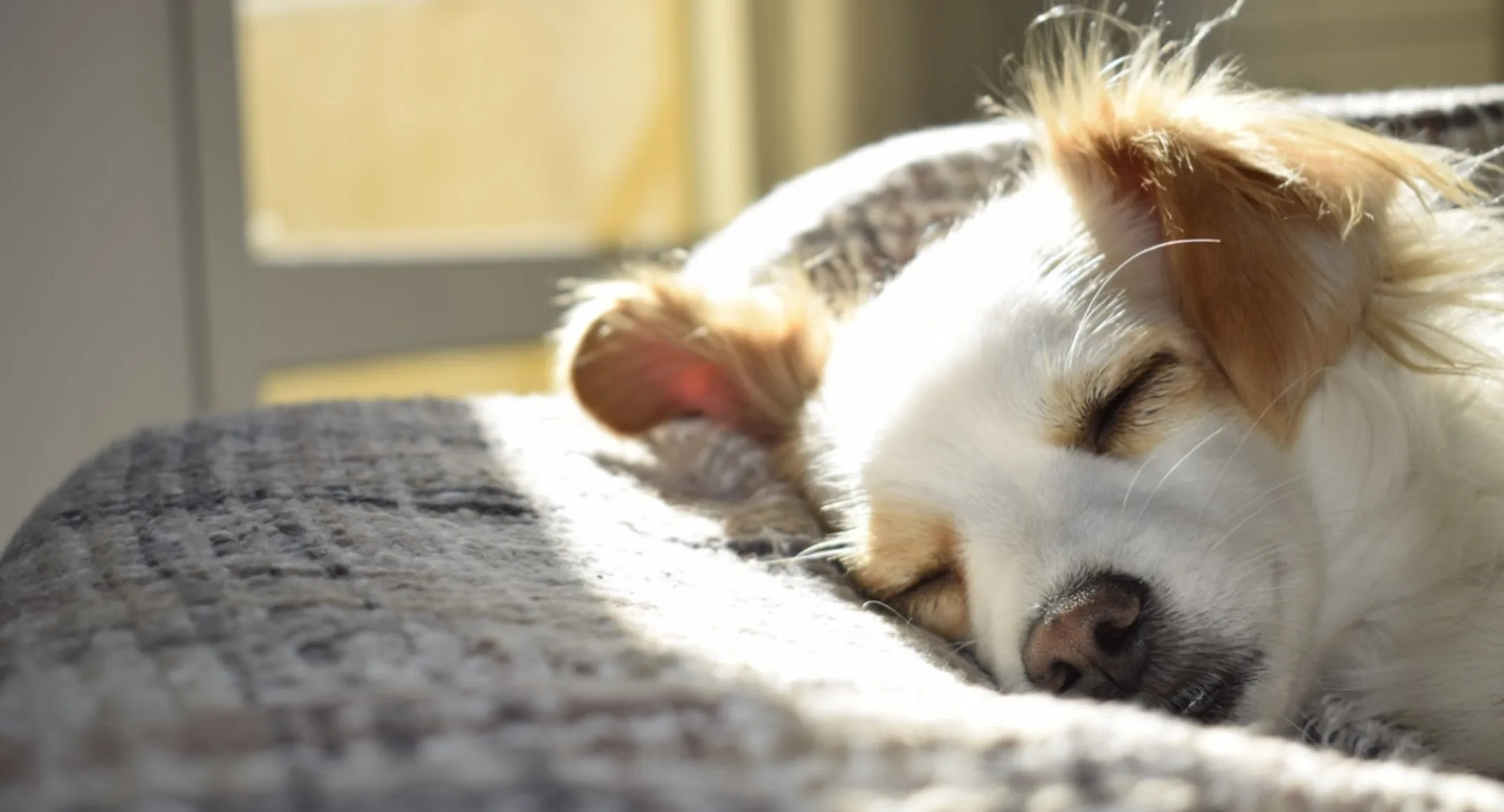5 Keys to Preventing Behavior Problems in Puppies
Dogs

April 22, 2022
Raising a puppy can be similar to raising a velociraptor.
They’re both full of energy and armed with sharp teeth, and convincing them to pay attention is not easy. But, as in the movie Jurassic World, raptors can be trained using positive reinforcement—and so can puppies.
Although your furry pal may seem all teeth and naughty antics, they too can be trained to become a good family companion. Follow Southwest Vet’s five tips, to help prevent your pup from developing behavior problems, and to set them on the path to good manners.
#1: Use the right tools for your puppy
To tackle—or prevent—any problem, you need the right tools by your side. For puppy training and preventing behavior problems, complete this shopping list:
Bite-size training treats
A flat collar
A harness
A six-foot leash—ditch the retractable leash
A clicker
Treat puzzles or long-lasting treats
An appropriately sized crate
Teething toys
Being prepared with all the proper puppy-training tools before you bring your new pet home will help you both get off to a great start.
#2: Adhere to a positive puppy training method
Arm yourself with a pocketful of bite-size training treats and your clicker (i.e., a device that “clicks” when you press the button), and then begin training your puppy using positive reinforcement. While you don’t necessarily need a clicker to practice positive training, the device will make capturing the appropriate behavior easier than a “Yes,” or “Good dog.”
When teaching your puppy new skills, such as loose-leash walking, how to sit to greet guests, and where to go to the bathroom, try this positive training technique.
Click = reward — “Load” the clicker by clicking and tossing a treat to your puppy. They’ll soon associate the click with a reward.
Click = “Sit” — Shape your puppy’s behavior by luring their nose up with a treat, and then, when their rear end hits the ground, click and reward them for sitting. You may have to break each behavior down into small steps to help your puppy learn the full action.
Click = Good spot — Alternatively, you can “capture” the behavior. For example, when your puppy pees in the correct spot in the yard, click and offer a great reward.
With time and repetition, your pup will catch on to what you expect, and you’ll be able to phase out the clicker and use a cue word instead.
#3: Remain consistent when training your puppy
Consistency is key when training your puppy. While your roommate may think your pup jumping up to greet them is adorable, this behavior can be dangerous once your puppy reaches full adult size. To teach your pup good manners and prevent problem behaviors, everyone must be on the same page. This means that one person cannot let your puppy on the couch, or jump up when greeted, or chew on shoes, while another tries to prevent these actions. Your puppy will become confused and unsure how to act, so remain consistent when teaching them appropriate behaviors.
Consistency is also key to successful house training. In general, puppies need to eliminate when they wake up, about half an hour after eating, and anytime their activity changes, such as when they stop playing. To train your puppy to eliminate appropriately, take them outside through the same door, to the same spot in the yard, and use the same command to encourage them to urinate and defecate. As soon as they do, praise and reward them heavily. If you wait until you get back inside to give them a treat, you’re inadvertently rewarding the wrong behavior—coming indoors. By sticking to the same routine, your pup will have house-training down in no time.
#4: Give your puppy the opportunity to succeed
Set your puppy up for success by making your home puppy-friendly. Remove all small items that can pose as chew toys, and keep your puppy in their crate when you are not home. Crating them when they are alone will also prevent them leaving puddles on the floor. If you notice your puppy chewing on something inappropriate, offer them a chew toy instead.
#5: Always end your pup’s training session on a positive note
Teaching your puppy good manners takes time, patience, and consistency, but will be worthwhile in the end. If you feel frustrated that your puppy isn’t picking up things quite as quickly as you hoped, end the lesson for the day, always ending on a positive note, which will encourage your pup to try again. During the next training session, ensure you focus on the improvements you’ve made.
Sometimes, those naughty behavior problems can signal an underlying medical issue. For example, if you’ve been trying to house-train your puppy, but they’re still having tons of accidents indoors, they may have a urinary tract or parasitic infection. Schedule an appointment with our Southwest Vet team to check your pup thoroughly from nose-to-tail.
